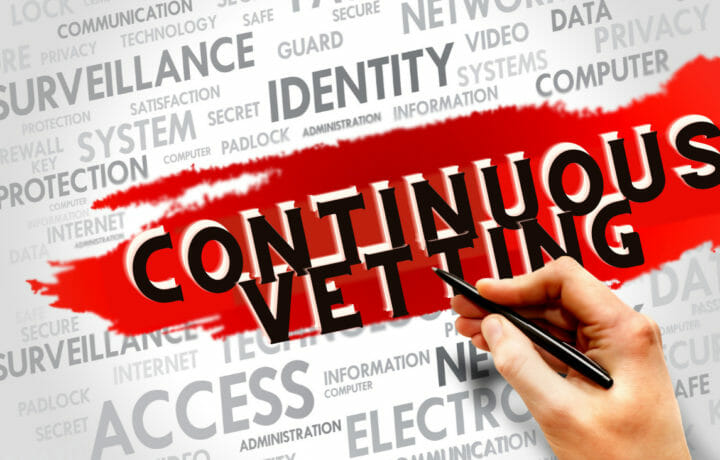The federal government is moving forward with plans to enroll its full public trust population into a system of Continuous Vetting, a shift that will more than double the number of individuals currently a part of a federal CV program and a key aspect of the Trusted Workforce 2.0 effort.
Trusted Workforce 2.0 has represented the largest overhaul of the security clearance process to-date, but as is key if you follow the name, it’s not ‘Security Clearance Process 2.0’ – because updating the personnel vetting process is just one aspect of protecting the government. A memo published by the Office of Personnel Management yesterday outlines how Continuous Vetting will be rolled out across the full trusted workforce population in 2024. Like all of Trusted Workforce, enrollment into CV will begin iteratively, but OPM anticipates having the full public trust population enrolled by the end of Fiscal Year 2024.
The memo states, “In accordance with Executive Order (E.O.) 13467, as amended, continuous vetting will apply to all
individuals who perform work for or on behalf of the Executive Branch, with few exceptions.” That means federal employees, contractors, and other individuals covered by the EO will all need to be enrolled.
What is Continuous Vetting?
CV is an ongoing review process designed to ensure individuals are able to meet the trust requirements specific to their position or role. An SF-85P from within the past five years is needed to enroll individuals into CV. The CV process is proactive, and the goal is to identify issues sooner rather than waiting for an episodic investigation.
It’s worth noting that not all CV is created equally. As a part of the iterative rollout of Trusted Workforce 2.0, the rollout of CV has also been iterative – first 1.25, then 1.5, as the government prepares for a full 2.0 solution which will include checks in a number of areas that are currently authorized, but haven’t been universally used in the vetting process, such as social media.
The public trust population should expect a CV solution involving checks similar those that are relevant to the SF-85P form itself – criminal conduct, financial issues, and other commonly available public data about an applicant.
The shift to CV can cause concern for applicants who may worry that adverse information could arise, that could jeopardize their employment prospects. OPM’s memo rightly advises agencies to begin considering how to operationalize the rollout of CV into their population. That rollout should include robust education about what information CV includes, and how alerts are addressed. The memo clarifies:
“If concerning information is found, that information is assessed to determine if it is accurate, relevant, timely, and adjudicated. The near real-time identification of potential concerns will often allow the agency to work with the individual to address the issue, as appropriate, (e.g., Employee Assistance Programs, if applicable) and reduce
the risk to the people, property, information, and mission.”
Agencies are not authorized to implement their own CV systems, but to comply with the EO must use an Investigative Service Provider (ISP) authorized through the Suitability, Credentialing, and Security Executive Agents.
The move to expand CV across the workforce fits the broader goals of creating a universally ‘trusted’ federal government population, enabling easier movement within and between federal agencies, and allowing for broader risk mitigation as issues are identified and addressed.




